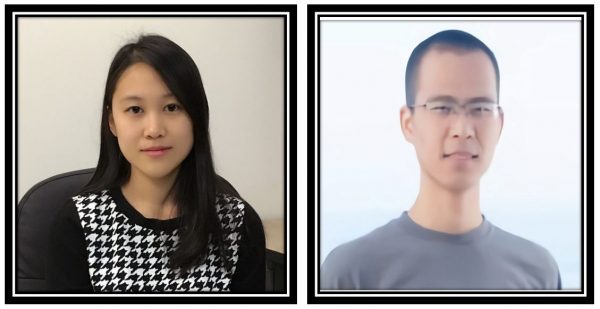Geological Sciences Lecture Series
Wednesday, May 1st at 1pm
CSL 422

Nan WangGeophysics Joint Doctoral Candidate SDSU / UCSD Title: Inclusion of Frequency-Dependent Spatial Correlation into the SDSU Broadband Ground-Motion Generation MethodBio: Nan Wang is a fourth-year Ph.D. student in SDSU/UCSD Joint Doctoral Program. She is advised by Dr. Kim Olsen at the SDSU Department of Geological Sciences. Nan holds a B.S. degree in Geophysics from the University of Science and Technology of China. Her work focusing on broadband ground motion simulations and the empirical correlations of ground motions. Abstract: Seismic losses (such as disruption of distributed infrastructure and losses to portfolios of structures) are typically dependent upon the regional distribution of ground-motion intensities, rather than the intensity at only a single site. Ground motion time series recorded at stations separated by up to a few tens of kilometers show a frequency-dependent spatial coherency structure, and measures such as PGVs, PGAs and peak spectral accelerations are found to be correlated. Quantifying ground motion over a spatially-distributed region is therefore important and requires information on the correlation between the ground motion intensities at different sites during a single event, where the spatial correlation can be significant within 50 km. The significance of excluding spatial correlation in ground motion simulations can result in an under-estimation of the seismic risk. The San Diego State University (SDSU) module on the Southern California Earthquake Center (SCEC) Broadband Platform (BBP) is a hybrid method that merges low-frequency deterministic synthetics and high-frequency stochastic scattering functions. We have implemented frequency-dependent spatial correlation into the SDSU method on the SCEC BBP using a post-processing method. This method makes use of a two-dimensional Gaussian random variable that has covariance corresponding to the spatial cross-correlation model developed from the Pacific Earthquake Engineering Research Center (PEER) Next Generation Attenuation (NGA) West2 database. Our results for the Loma Prieta, CA, event show that the frequency-dependent spatial correlation in our broadband synthetics compares well to that estimated from seismic observations. |
Zhifeng HuGeophysics Joint Doctoral Candidate SDSU / UCSD Title: Modeling of Empirical Transfer Functions Including 3D Velocity StructureBio: Zhifeng Hu received his B.S degree from Peking University in Geophysics. He did some research work on friction law and includes seismicity during his undergraduate research. After coming to SDSU, he worked with Dr. Kim Olsen on large-scale wave propagation simulation. His work focuses on exploring modeling of strong ground motions including nonlinear effects, site response, etc. Abstract: Site response can be an important factor in estimating seismic hazard. However, conventional simplified modeling of site amplification with assumptions of plane SH waves propagating vertically through layered homogeneous media often poorly predicts the empirical transfer function (ETF), particularly where large lateral variations of velocity are present. Here, we use physics-based simulations that naturally incorporate the complex subsurface material properties and provide synthetic ground motions to compute theoretical transfer functions (TTF). We calibrate the 3D subsurface geometry by means of the topography near the sites and incorporate information from a suite of Vs profiles obtained from borehole logs. By comparing TTFs to the estimated ETFs at selected sites (e.g. the KiK-net sites and the Garner Valley Downhole Array site), we show how simulations in the calibrated 3D medium, including statistical distributions of small-scale heterogeneities, are able to adequately model the site amplification. We show that the velocity variations play a considerable role in determining both the frequency and amplitude of the site response. Properly calibrated spatial variation of the sediments below the site, including the slope of the edges and the depth to the bedrock, significantly improves the fit to the ETFs. In some cases, the Vs profiles derived from the borehole measurements are unable to produce TTFs consistent with the observed ETFs. The results emphasize the importance of reliable calibration of subsurface structure and material properties in site response studies. |

